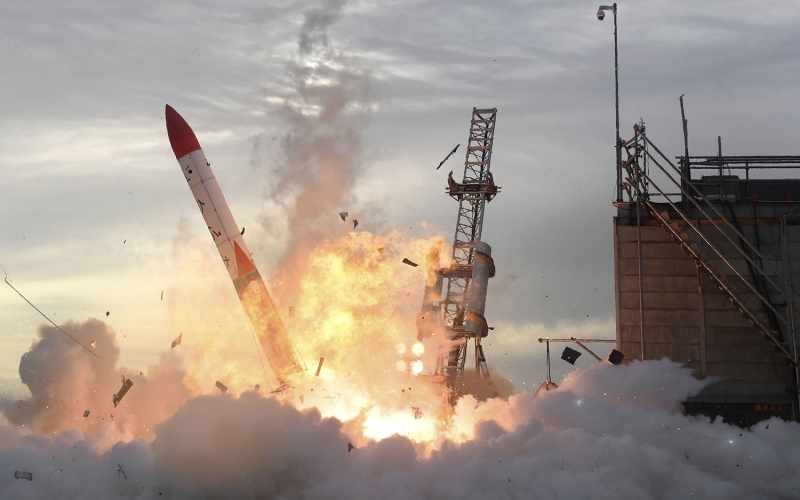The US hypersonic missile test has epic failed
The United States still has some catching up to do in developing hypersonic weapons. The US government is pumping millions into development. Now the test of a hypersonic missile off Hawaii has failed.
A test flight of a US hypersonic missile near Hawaii ended in failure on Wednesday. This is reported by the US news agency Bloomberg, citing a spokesman for the US Department of Defense. The authority therefore announced only a few details about the incident. She merely stated that "an anomaly occurred after the test facility was ignited".
Pentagon spokesman Tim Gorman told the news agency:
"While the Department has not been able to collect data on the entirety of the planned flight profile, the information gleaned from this event will provide us with important insights."
The botched test was therefore part of the CPS (Conventional Prompt Strike), a program for the development and testing of hypersonic glide missiles, under which the US arms manufacturer Lockheed Martin is developing weapons for submarines and surface ships. The hypersonic weapon systems can reach speeds of more than 6,174 km/h and are practically uninterceptable for existing air defense systems.
The program suffered another setback in October 2021 when a launch vehicle at the Pacific Spaceport Complex in Kodiak, a commercial rocket launch site in Alaska, failed to test due to the hypersonic glide vehicle attached to it failing to detach. However, the launch vehicle was not part of the weapon system, as US Defense Department officials emphasized at the time. A hypersonic glide vehicle can carry both nuclear and conventional payloads.
Despite the two failed tests, the Pentagon says it is still confident that it will be able to use the modern weapon systems in this decade. But for this to happen, the US must first be able to keep up with Russia and China.
Deputy Chief of the US Space Force, General David Thompson, admitted to US media last fall:
"We are not as advanced as the Chinese or the Russians in terms of hypersonic programs."
In this regard, the USA would have "to catch up very quickly". While this is a challenge, "it's not that we don't have an answer to this challenge," said the general. "All we have to do is understand them, develop them fully and fly them". While some successful tests have been conducted as part of various American programs, the US military has not yet deployed a modern hypersonic system.
The USA and the then Soviet Union began developing hypersonic weapons as early as the 1960s. The basic idea behind hypersonic missiles is to launch them not from the ground or from a ship, but from an aircraft flying at high altitude. Only at a safe distance from the aircraft does its own rocket engine ignite, which only carries the rocket up to 20 kilometers in the air. There, the air resistance is so low that a rocket can reach significantly higher speeds. From there, the rocket then flies down to its target.

Comments to this:








